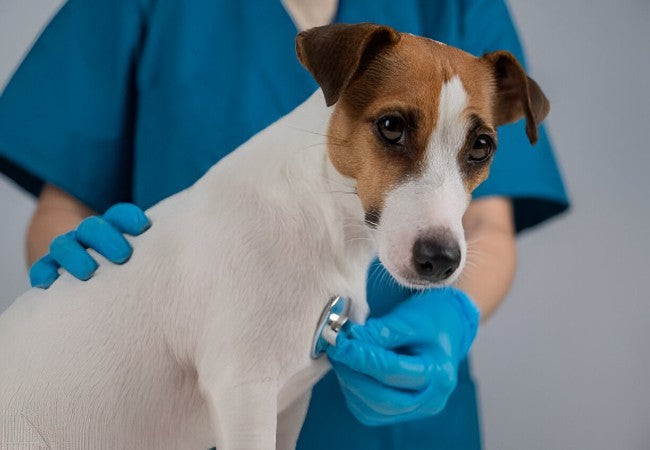Is Your Dog at Risk of Brucellosis? Vet‑Led Guide 2025 🩺

In this article
Is Your Dog at Risk of Brucellosis? Vet‑Led Guide 2025 🩺
By Dr. Duncan Houston BVSc
Hi, I’m Dr Duncan Houston, BVSc, founder of Ask A Vet. In this comprehensive 2025 veterinary update, we’ll explore canine brucellosis (B. canis infection)—its impact, zoonotic potential, diagnostic challenges, and practical treatment strategies, all provided with clarity, compassion, and clinical insight. 🐾
🧬 What Is Canine Brucellosis?
Canine brucellosis is a contagious bacterial infection caused by the bacterium Brucella canis, primarily affecting dogs’ reproductive systems. It’s a venereal disease that injures both female and male dogs—causing abortions, infertility, testicular issues, and chronic carrier states—plus it’s zoonotic, meaning it can infect humans .
⚠️ Why It Matters
- Reproductive loss: Late-term abortions (typically at 45–55 days), stillbirths, weak pups, and infertility.
- Chronic male disease: Epididymitis, orchitis, testicular shrinkage, infertility .
- Possible spread to other organs: Lymph nodes, eyes (uveitis), spine (diskospondylitis), kidneys, heart, central nervous system.
- Public health risk: Though rare in healthy adults, B. canis can infect breeders, vets, immunocompromised individuals, and children.
🐾 Who Is at Risk?
Any breed can get infected, but the disease is especially prevalent among breeding dogs, stray or rescue dogs, and those exposed to livestock or other infected dogs.
Subclinical cases are common—some dogs carry the infection without obvious signs, making routine testing essential in breeding programs.
🚩 Clinical Signs You Should Know
In Female Dogs
- Normal appearance until reproductive problems begin
- Infertility or refusal to breed
- Abortion in late gestation (45–59 days) with prolonged vaginal discharge afterward
- Births of stillborn or weak puppies
In Male Dogs
- Enlarged scrotum, swollen testicles due to epididymitis/orchitis
- Progressive testicular shrinkage and infertility
- Semen can carry B. canis—even after neutering, shedding may continue from the prostate
Other Signs (Both Sexes)
- Swollen lymph nodes
- Diskospondylitis—back pain, limb weakness
- Uveitis—eye inflammation
- Lethargy, weight loss, occasional fever (though it may be missing)
🧪 How Brucellosis Spreads
The main transmission routes are through genital fluids (semen, vaginal discharge), aborted fetuses, placentas, urine, saliva, and contaminated materials . Infection occurs via:
- Breeding or mating with an infected dog
- Ingestion of contaminated fluids, placentas, aborted tissues
- Contact with contaminated urine or fomites in the environment
- Mucous membrane exposure—aerosols, eye or nasal contact
After a female abortion, vaginal fluids remain infectious for 4–6 weeks; males can shed bacteria through semen and urine for up to two years .
🏥 Diagnosis: Why It’s So Tricky
There is no single perfect test. A combination of methods provides the best diagnosis :
- Rapid slide agglutination test (RSAT): Good screening tool, three to four weeks post-exposure; false positives possible.
- Tube agglutination (TAT) or BAPA: More specific for B. canis or smooth Brucella spp., respectively.
- PCR testing: Highly sensitive, can detect B. canis DNA in blood.
- Blood culture: Gold standard but slow and may miss bacteria.
- Serologic panels: Used repeatedly over time—especially during estrus, pregnancy, or post-abortion—to confirm infection.
Confirm veterinarians and labs should follow state guidelines for reporting and confirmatory testing.
💉 Treatment & Management Options
Due to chronic persistence, full cure is rare; management focuses on combination strategies and reducing spread :
1. Spay/Neuter
Reduces bacterial load and shedding, but does not eliminate infection fully.
2. Long-term Antibiotic Protocols
Typical regimens may include:
• Doxycycline + enrofloxacin or rifampin
• Minocycline + streptomycin in kennel settings
Duration: 4–6 weeks or longer. Relapse is common .
Drawbacks: Resistance risk, side effects, and cost.
3. Regular Monitoring
Retest via serology and PCR every 4–6 weeks during and post-treatment. Continue periodic testing for a minimum of 6 months .
4. Regulatory Considerations and Euthanasia
Some regions mandate euthanasia of infected dogs due to public health concerns . In other places, controlled treatment and isolation may be allowed.
5. Environmental & Household Precautions
Strict hygiene is essential. Clean and disinfect all areas exposed to reproductive fluids. Wear gloves and masks—especially when handling placentas, aborted tissues, or cleaning kennels .
👨⚕️ Zoonotic Risk: What You Should Know
B. canis can infect humans, though human cases are relatively rare. Symptoms include flu-like signs, fever, fatigue, joint pain, and occasionally chronic complications like arthritis or endocarditis.
High-risk individuals include veterinarians, breeders, kennel staff, laboratory workers, pregnant women, children, and those with weakened immune systems .
Protect yourself: Use disposable gloves, gowns, N95 masks/respirators, eyewear, and follow strict hygiene when handling bodily fluids or samples .
📅 Prognosis & Long-Term Management
- Breeding dogs: Prognosis is poor; infection is likely lifelong with reproductive impact. Removal from breeding programs is strongly advised .
- Pet dogs May live disease-free after treatment, though lifelong monitoring is recommended.
- Public health: With hygiene and proper handling, zoonotic risk is low; follow guidelines diligently .
🏡 At‑Home Care & Prevention Tips
- Isolate infected dogs—especially during heat cycles and post-abortion.
- Disinfect pens, utensils, and bedding with effective agents (e.g., bleach-based cleaners).
- Wear PPE (gloves, mask, goggles) when cleaning or handling affected materials.
- Wash hands thoroughly after contact or cleaning.
- Inform your physician and veterinarian if you notice flu-like symptoms after exposure.
🔑 Role of Ask A Vet, Woopf & Purrz
Need help navigating testing, treatment, or recovery? With Ask A Vet, you can consult instantly about brucellosis testing strategies or antibiotic plans. stress‑reducing enrichment toys to help dogs during isolation.
🧾 Final Takeaways
Canine brucellosis is a serious, often silent disease with reproductive, chronic health, and zoonotic implications. Diagnosis is challenging, treatment is complex, and lifelong management is required. With careful veterinary care, hygiene, and support, affected dogs can continue to live well. As always, partnering with your vet—and leveraging resources like Ask A Vet.
Questions or concerns? Reach out on Ask A Vet or download our app for 24/7 vet support.






